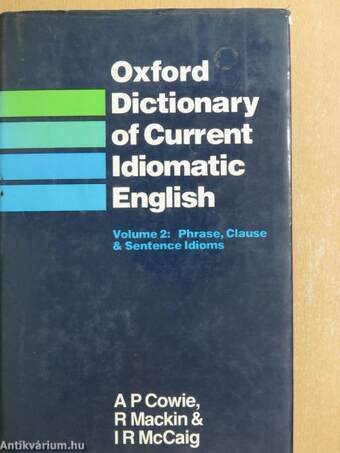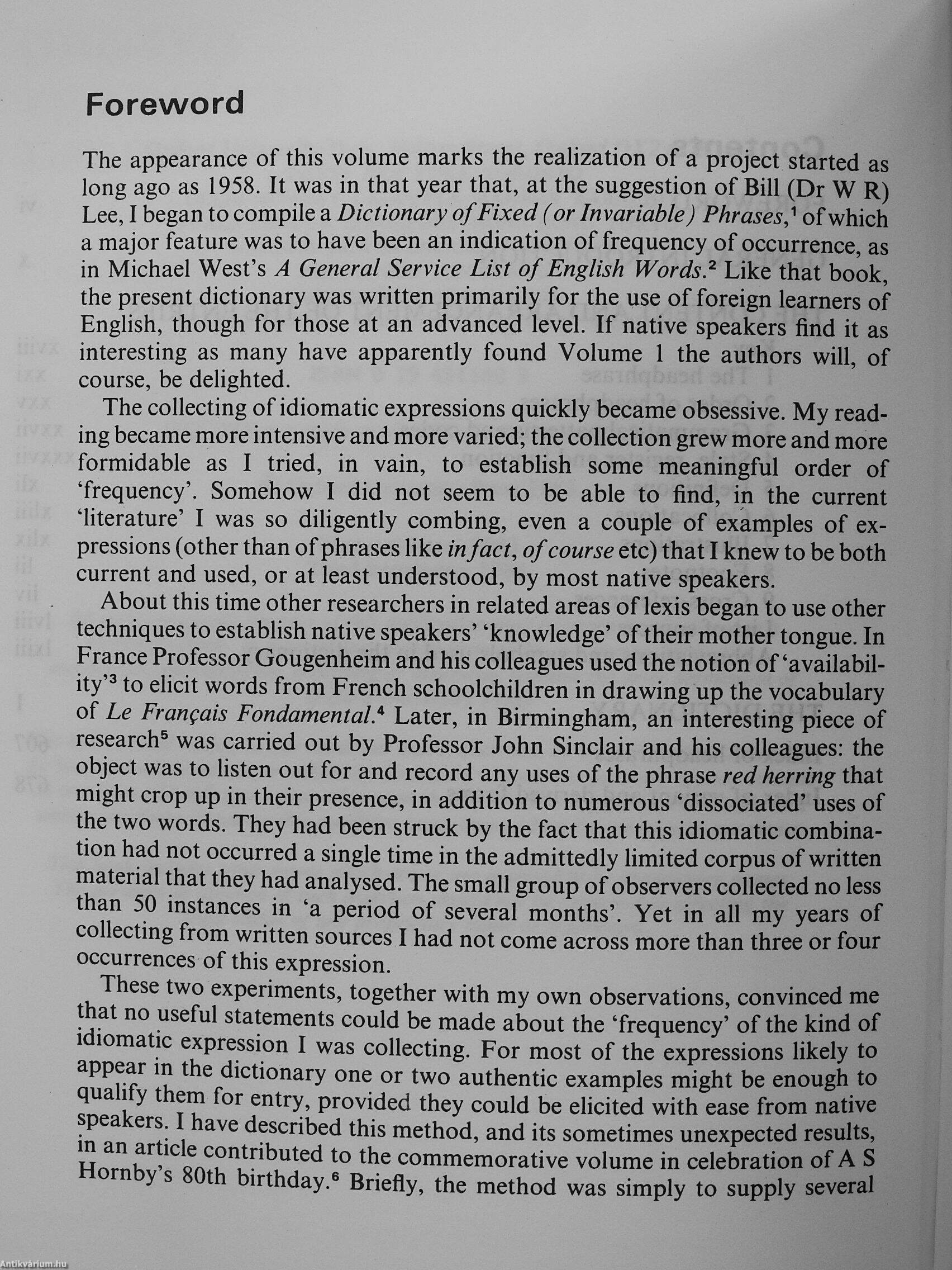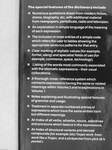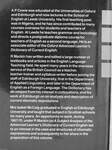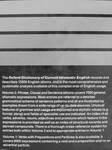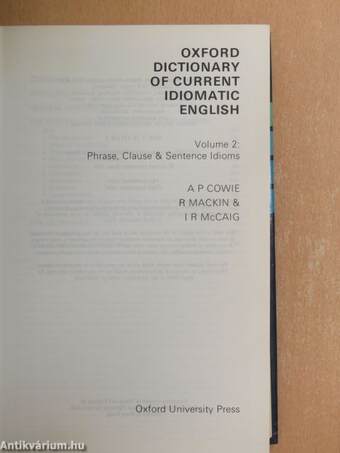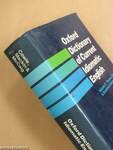1.104.878
kiadvánnyal nyújtjuk Magyarország legnagyobb antikvár könyv-kínálatát

VISSZA
A TETEJÉRE
JAVASLATOKÉszre-
vételek
Oxford Dictionary of Current Idiomatic English 2
Phrase, Clause & Sentence Idioms
| Kiadó: | Oxford University Press |
|---|---|
| Kiadás helye: | Oxford |
| Kiadás éve: | |
| Kötés típusa: | Varrott keménykötés |
| Oldalszám: | 748 oldal |
| Sorozatcím: | |
| Kötetszám: | |
| Nyelv: | Angol |
| Méret: | 22 cm x 15 cm |
| ISBN: | 0-19-431150-3 |
naponta értesítjük a beérkező friss
kiadványokról
naponta értesítjük a beérkező friss
kiadványokról
Előszó
TovábbFülszöveg
¦r I ' I
The special features of the dictionary include
¦ Numerous quotations drawn from modern fiction, drama, biography, etc, with additional material from newspapers, periodicals, radio and television.
¦ An explanation in simple language of the meaning of each expression.
¦ The inclusion in most entries of a simple code which refers the user to tables showing the appropriate sentence patterns for that entry. ^
¦ Clear marking of stylistic values (for example, formal, slang) and specialist fields of use (for example, commerce, space, technology).
¦ Listing of the words most commonly associated with the idiomatic expressions - their usual collocations.^
¦ A thorough cross - reference system which connects expressions having the same or related meanings within Volume 2 and to expressions in Volume 1. ""
¦ Notes explaining and illustrating special features of grammar and usage.
¦ Treatment in separate numbered entries of expressions wh ich have the same written form but... Tovább
Fülszöveg
¦r I ' I
The special features of the dictionary include
¦ Numerous quotations drawn from modern fiction, drama, biography, etc, with additional material from newspapers, periodicals, radio and television.
¦ An explanation in simple language of the meaning of each expression.
¦ The inclusion in most entries of a simple code which refers the user to tables showing the appropriate sentence patterns for that entry. ^
¦ Clear marking of stylistic values (for example, formal, slang) and specialist fields of use (for example, commerce, space, technology).
¦ Listing of the words most commonly associated with the idiomatic expressions - their usual collocations.^
¦ A thorough cross - reference system which connects expressions having the same or related meanings within Volume 2 and to expressions in Volume 1. ""
¦ Notes explaining and illustrating special features of grammar and usage.
¦ Treatment in separate numbered entries of expressions wh ich have the same written form but different meanings.
¦ An Index of all verbs, adverbs^ nouns, adjectives and pronouns which feature in the expressions.
¦ An index of structural variants and derived compounds (for example (do) Trojan work from work like a Trojan, and a pickpocket from pick sb's
^ pocket).
A P Cowie was educated at the Universities of Oxford and Edinburgh and now lectures in the School of English at Leeds University. His first teaching post was in Nigeria, and he has since contributed to many courses overseas for students and teachers of English. At Leeds he teaches grammar and lexicology and directs a postgraduate diploma course for teachers of English as a second language. He is an associate editor of the Oxford Advanced Learner's , . Dictionary of Current English.
R Mackin has written and edited a large number of textbooks and articles in the English Language Teaching field. He spent many years in the overseas service of the British Council as a teacher, teacher-trainer and syllabus-writer before joining the staff of Edinburgh University, first in the Department of Applied Linguistics, and later in the Department of English as a Foreign Language. The Dictionary has developed from his interest in collocations, and his . work at Edinburgh on an analysis and description of current idiomatic expressions. :
Mrs Isabel McCaig graduated in English at Edinburgh University and taught that subject in Scottish schools for many years. An opportunity to work, during 1967-70, under R Mackin on A Subject Analysis of the; Advanced Learner's Dictionary of Current English led to an interest in the uses and structures of idiomatic expressions and subsequently to her share in the preparation of this volume.
The Oxford Dictionary of Current Idiomatic English records and describes 15000 English idioms, and is the most comprehensive and systematic analysis availably of this complex area of English usage.
Volume 2: Phrase, Clause and Sentence Idioms covers 7000 general idiomatic expressions. Most entries are referred to a detailed grammatical scheme of sentence patterns and all are illustrated by examples drawn from a wide range of up-tQ=daie-«burces. Unusual features of grammar andAisageare-e^c^ned and stylistic values (e.g. formal, slang) and fields of specialist use are indicated. An index of all verbs, adverbs, nouns, adjectives and pronouns which feature in the expressions is provided as well as an index of structural variants and derived compounds. There is a thorough cross-reference system for entries both within Volume 2 and to appropriate entries in Volume 1.
Volume 1: Verbs with Prepositions and Particles is also available. It covers 8000 expressions containing a verb and a preposition and/or an adverbial particle. Vissza



